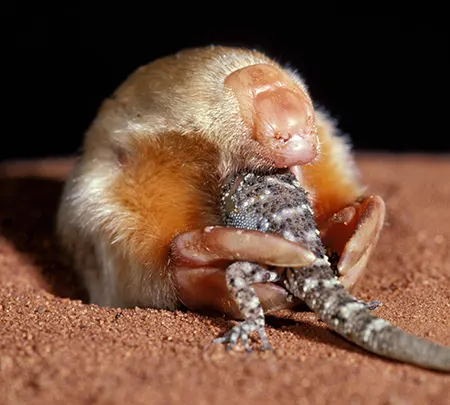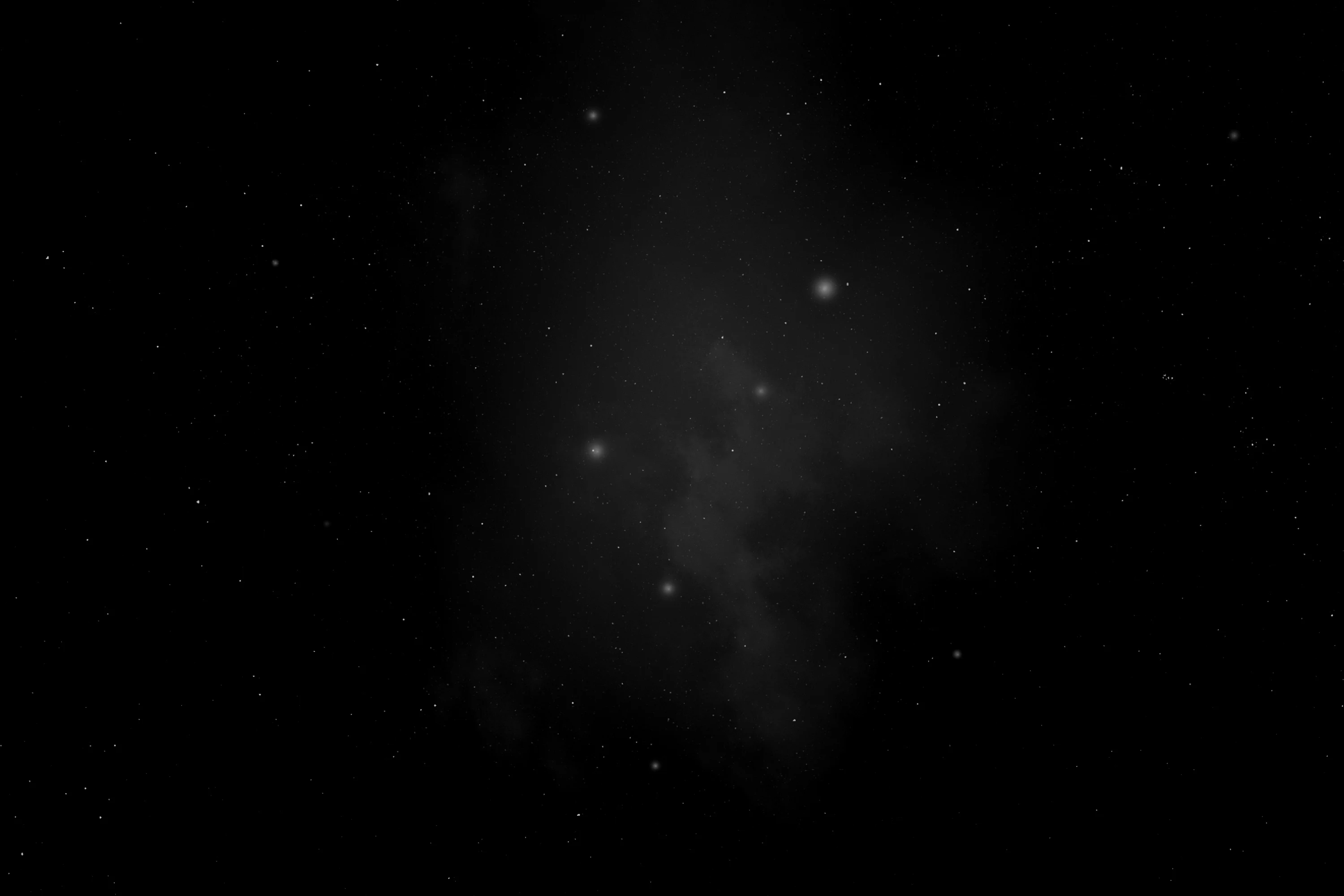
(Notoryctemorphia)
Marsupial Moles
Ноториктоподібні
Marsupial moles specialized marsupial mammals that are found in the Australian interior.
The cone shaped head merges directly with the body, and there is no obvious neck region. The limbs are short and powerful, and digits III and IV of the manus have large spade-like claws. The dentition varies with individuals and, because the molars have a root of only one third of the length, it has been assumed that moles cannot deal with hard food substances. The dorsal surface of the rostrum and the back of the tail have no fur and the skin is heavily keratinized. There is no external evidence of the eyes, and the optic nerve is absent. It does, however, have a pigment layer where the eyes should be, probably a vestige of the retina. Both lachrymal glands and Jacobson’s organ are well developed, and it has been suggested that the former plays a role in lubricating the nasal passages and Jacobson’s organ.
The external ear openings are covered with fur and do not have pinnae. The nostrils are small vertical slits right below the shield-like rostrum. Although the brain has been regarded as very primitive and represents the “lowliest marsupial brain”, the olfactory bulbs and the tubercula olfactoria are very well developed. This seems to suggest that the olfactory sense plays an important role in the marsupial mole’s life, as it would be expected for a creature living in an environment lacking visual stimuli. The middle ear seems to be adapted for the reception of low-frequency sounds.
In an example of convergent evolution, the marsupial mole resembles the Namib Desert golden mole (Eremitalpa granti namibensis) and other specialised fossorial animals in having a low and unstable body temperature, ranging between 15–30 °C. It does not have an unusually low resting metabolic rate, and the metabolic rate of burrowing is 60 times higher than that of walking or running. Because it lives underground, where the temperature is considerably lower than at the surface, the marsupial mole does not seem to have any special adaptations to desert life. It is not known whether it drinks water or not, but due to the irregularity of rainfall it is assumed that it does not.
Surface behavior
It sometimes wanders above the surface where traces of several animals have been found. While most evidence indicates that it does this seldom and moves just a few meters before burrowing back underground, on some occasions multiple tracks were found suggesting that one or more animals have moved above ground for several hours. According to Aboriginal sources, marsupial moles may surface at any time of day, but seem to prefer to do so after rain and in the cooler season.
Captive animals have been observed to feed above ground and then return underground to sleep. Occasionally it has been recorded to suddenly “faint” on the surface without waking up for several hours until disturbed.
Above the ground it moves in a sinuous fashion, using its powerful forelimbs to haul the body over the surface and its hind limbs to push forward. The forelimbs are extended forward in unison with the opposite hind limb. Moles move about the surface with frantic haste but little speed.
Burrowing behavior
While burrowing, the southern marsupial mole does not make permanent tunnels, but the sand caves in and tunnels back-fill as the animal moves along. For this reason its burrowing style has been compared to “swimming through the sand””. The only way its tunnels can be identified is as a small oval shape of loose sand. Although it spends most of its active time 20-100 cm below the surface, tunneling horizontally or at shallow angles, it sometimes for no apparent reason turns suddenly and burrows vertically to depths of up to 2.5 meters.
Although most food sources are likely to occur at depths of approximately 50 cm from the surface, the temperature of these environments varies greatly from less than 15°C during winter to over 35°C during summer. While one of the captive moles was observed shivering when the temperature dropped under 16°C, it seems probable that moles can select the temperature of their environment by burrowing at different depths.
Diet
Little is known about the southern marsupial mole’s diet, and all information is based on the gut content of preserved animals and on observations made on captive specimens. All evidence seems to suggest that the mole is mainly insectivorous, preferring insect eggs, larvae and pupae to the adults. Based on observations made on captive animals, it seems that one of the favorite food choices was beetle larvae, especially Scarabaeidae. Because burrowing requires high energy expenditure it seems unlikely that the mole searches for its food in this prey impoverished environment, and suggests that it probably feeds within nests. It has been also recorded to eat adult insects, seeds and lizards. Below the desert sands of Australia, the marsupial mole searches for burrowing insects and small reptiles. Instead of building a tunnel, it “swims” through the ground, allowing the sand to collapse behind it.
Social behavior
There is little known about the social and reproductive behavior of these animals, but all evidence seems to suggest that it leads a solitary life. There are no traces of large burrows where more than one individual might meet and communicate. Although it is not known how the male locates the female, it is assumed that they do so using their highly developed olfactory sense.
The fact that the middle ear seems to be morphologically suited for capturing low frequency sounds, and that moles produce high pitched vocalizations when handled, indicates that this kind of sound that propagates more easily underground may be used as a form of communication.

(Notoryctes typhlops)
Southern Marsupial Mole
Південний сумчастий кріт
It lives in the central sandy desert regions of Western Australia, northern South Australia and the Northern Territory. Recent studies indicate that its habitat also includes Great Victoria and Gibson Deserts.

(Notoryctes caurinus)
Northern Marsupial Mole
Північний сумчастий кріт
It is distributed over an area of northwest Australia, at aeolian dunes and other soft sand terrain of the Australian interior. The records include the Little Sandy and Great Sandy Deserts, and at northern areas of the Gibson Desert (Western Australia), and possibly the Tanami Desert.

